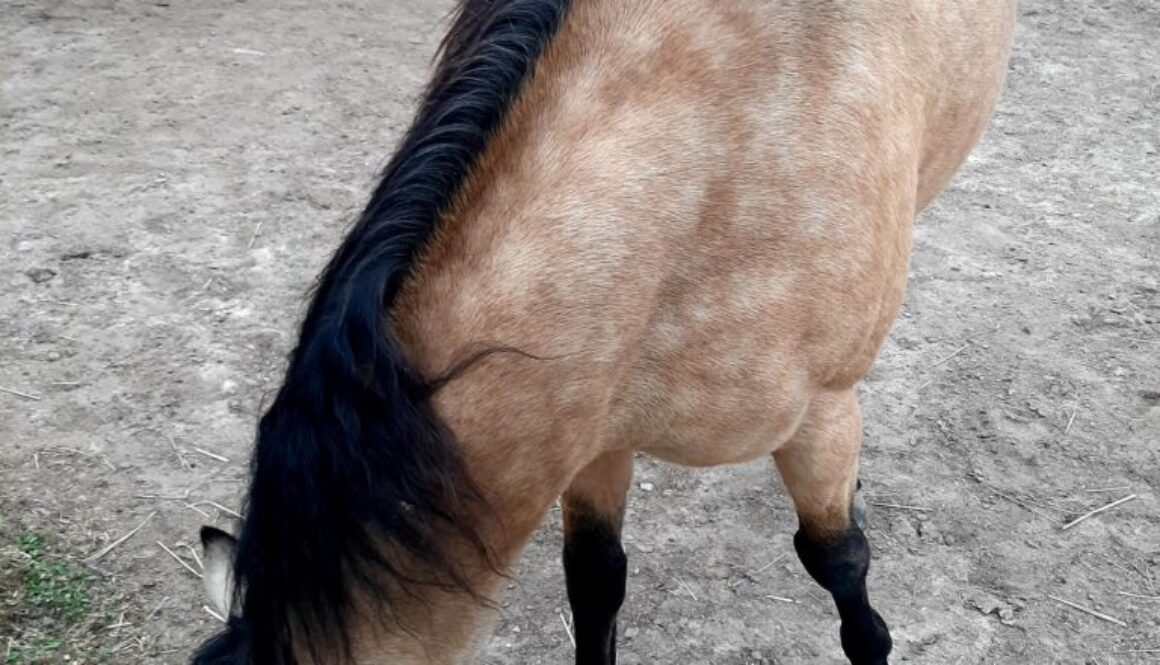Martha’s Story – How Horses Helped
 Thank you for your generous support of the H.O.P.E. Ranch Foundation.
Thank you for your generous support of the H.O.P.E. Ranch Foundation.
Your response has brought HOPE to many individuals and families in SE MN through animal-assisted psychotherapy.
With your help, we are bringing lifesaving and life-changing therapy to those in need.
Martha Walters, a former client of H.O.P.E. Ranch, agreed to share her experience and observations of how working with the horses helped her.
“I remember our first session you took me out to meet the horses. We weren’t even inside the fence yet, and I threw my hands up in the air and the horse reacted. I didn’t even notice it, and you said, “Did you see that?” And we talked about it. I learned to be more aware of what I was feeling and doing, through the horses and you. I remember trying to lead the horse, Scooter. But HE led ME. He helped me become aware of my body language, attitude, and demeanor. When I learned to change those things, then Scooter allowed Me to lead Him.”
Martha Walters and Kit Muellner, founder of H.O.P.E. Ranch, wish to express their heartfelt gratitude for your support of the HOPE Ranch Foundation.
Your donation dollars will allow us to continue the Foundation’s work of supporting EAGALA model animal-assisted psychotherapy in SE Minnesota. EAGALA or Equine Assisted Growth and Learning Association is a mental health treatment model that incorporates horses as partners in the therapeutic process. It offers a unique and experiential approach, where horses play a vital role in helping clients explore
emotions, build self-awareness, and achieve positive outcomes.
Every donation directly helps the clients, animals and staff of H.O.P.E. Ranch. Scholarships to clients, through programming and services, care of the animals, and expansion/maintenance of our facilities.
You can donate in one of three ways:
1. Online at https://givebutter.com/21Euz6
2. Call the office at (507) 281-3033
3. Mail a check to the HOPE Ranch Foundation – 9145 80th Ave SE Suite B Chatfield, MN 55923
You can also help by volunteering your time at the H.O.P.E. Ranch.
Find out more about volunteer opportunities, call (507) 281-3033.
Warm Regards,
Terri Wintering
President of the Board and the H.O.P.E. Ranch Foundation Board of Directors





 Lifting someone’s spirits over the holidays involves spreading joy, warmth, and support. Here are some thoughtful and effective ways to do that:
Lifting someone’s spirits over the holidays involves spreading joy, warmth, and support. Here are some thoughtful and effective ways to do that:


 We welcome the sound of new hoofbeats at HOPE Ranch. Joining our therapeutic team is Tia. She brings not only grace and beauty but also hope.
We welcome the sound of new hoofbeats at HOPE Ranch. Joining our therapeutic team is Tia. She brings not only grace and beauty but also hope.
 At HOPE Ranch, the sound of hoofbeats heralds the arrival of newfound companions on a remarkable journey. These majestic beauties join our therapeutic team, bringing not only their physical presence but also a profound sense of hope. Here at HOPE Ranch, these equine partners play a pivotal role in helping patients navigate the path to healing, offering solace, connection, and the promise of a brighter tomorrow.
At HOPE Ranch, the sound of hoofbeats heralds the arrival of newfound companions on a remarkable journey. These majestic beauties join our therapeutic team, bringing not only their physical presence but also a profound sense of hope. Here at HOPE Ranch, these equine partners play a pivotal role in helping patients navigate the path to healing, offering solace, connection, and the promise of a brighter tomorrow. We are saddened to report that our beautiful Misty has passed away. Misty was 23 years old. She was a beautiful shiny copper quarter horse mare.
We are saddened to report that our beautiful Misty has passed away. Misty was 23 years old. She was a beautiful shiny copper quarter horse mare. 




 2021: THE DOWNS
2021: THE DOWNS 2021: THE UPS!
2021: THE UPS!